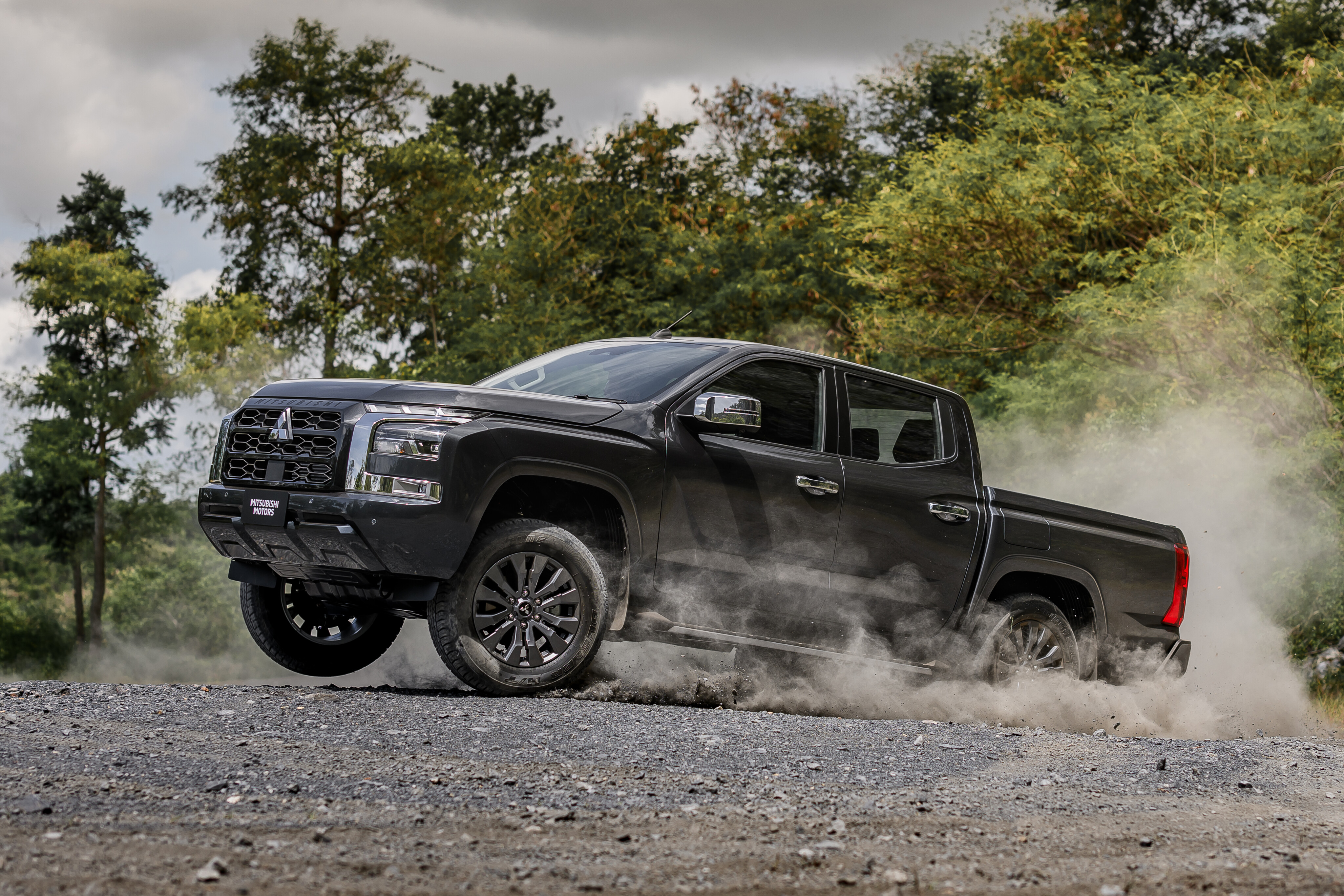
July 27: 2024 Triton Australian details
Just hours after its global reveal, key Aussie details for the new Triton have been revealed. Details at the story linked below.
July 26: New Triton unveiled at last!
The all-new 2024 Mitsubishi Triton ute has been detailed ahead of its local launch.
Snapshot
- 2024 Mitsubishi Triton finally unveiled!
- Bigger in every dimension
- Punchier twin-turbo diesel
- 3.5-tonne towing capacity for 4x4 variants
- Much-improved active safety features, including AEB and adaptive cruise control
On sale now in Thailand, the sixth-gen Triton boasts fresh underpinnings, a more potent twin-turbo diesel engine, and an uprated 3.5-tonne braked towing capacity.
Mitsubishi said it has paid close attention to improving the Thai-built Triton’s on-road manners and cabin comfort, all without sacrificing the HiLux, Ranger and D-Max rival’s signature go-anywhere capability.
An extremely important model for Mitsubishi, CEO Takao Kato is expecting the ute to top 200,000 annual sales in 100 markets around the world.
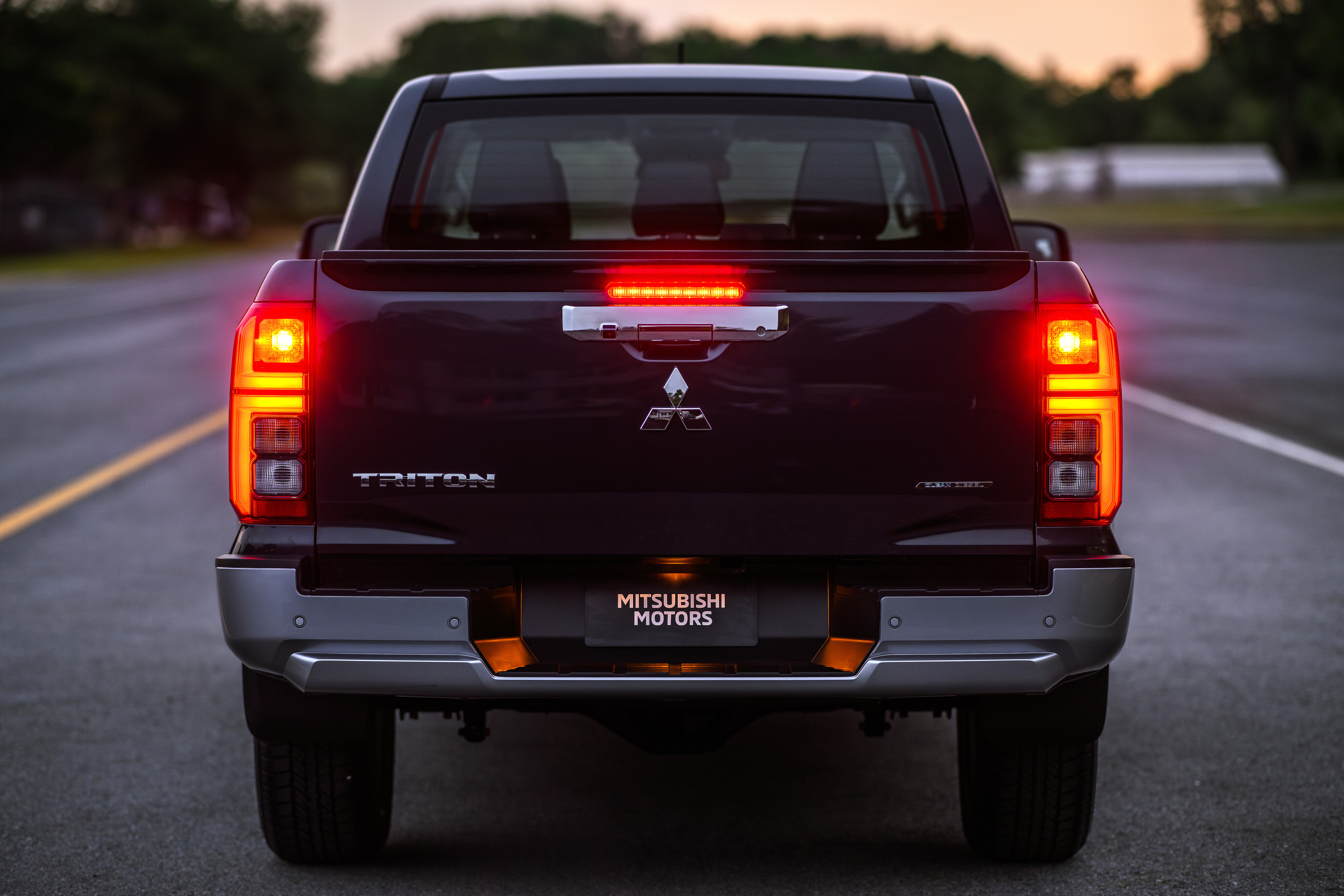
It will launch in Thailand in single, club, and dual cab variants with a pick-up tub on the back.
The next-gen Triton is expected to arrive in Australian showrooms in early 2024, around the same time it returns to Japan for the first time in over a decade.
Moving further ahead, we’ll see the new-gen Triton form the basis for the next-gen Nissan Navara ute, with the pair expected to be closely related.
There’s also electrification in the Triton’s future, though Mitsubishi is still playing down the exact strategy for its electrified ute.
JUMP AHEAD
- Chassis and suspension
- Dimensions
- Engine and powertrains
- Exterior and interior design
- Safety and convenience
- Availability
Chassis and suspension
The Triton's new ladder frame promises to be much stronger, with its bending rigidity up by 40 per cent, and torsional rigidity up by 60 per cent with a much greater cross-sectional area.
Extended use of high-tensile steel has minimised overall weight increase, and the new Triton boasts a lighter body than the car it replaces, though Mitsubishi has yet to confirm a final kerb weight.
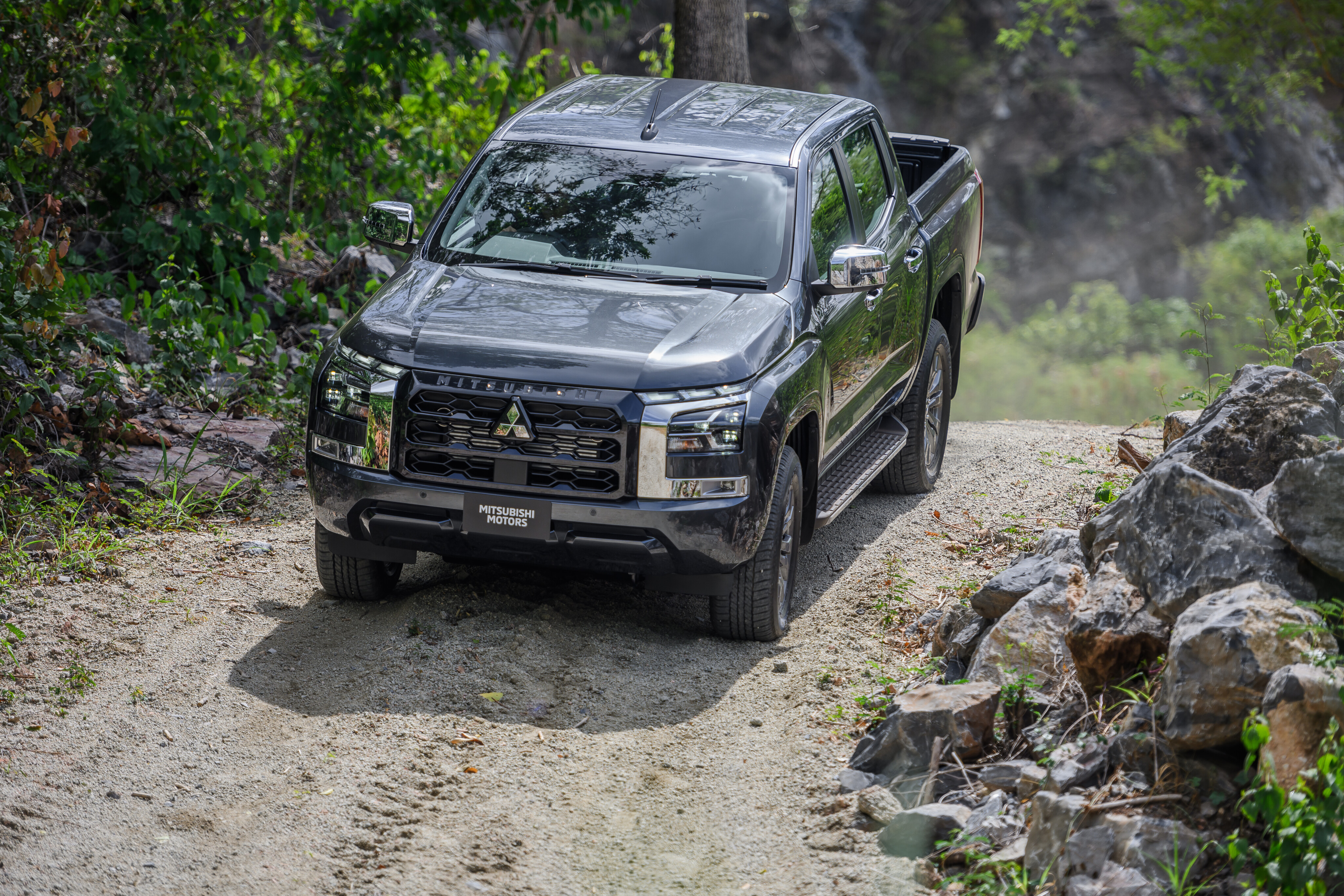
The Triton’s stiffer frame is likely to provide a better platform for its double-wishbone front suspension.
Mitsubishi has increased its front stroke by 20mm with a higher upper mounting point. Beefier shock absorbers and lighter rear leaf springs will lower friction for improved ride compliance.
For the first time, the Triton adopts an electric power steering system in high-end variants. This should result in a lighter feel around town that will weigh up at high speed. Mitsubishi has also worked to reduce kickback in the steering system – a common bugbear of the old car.
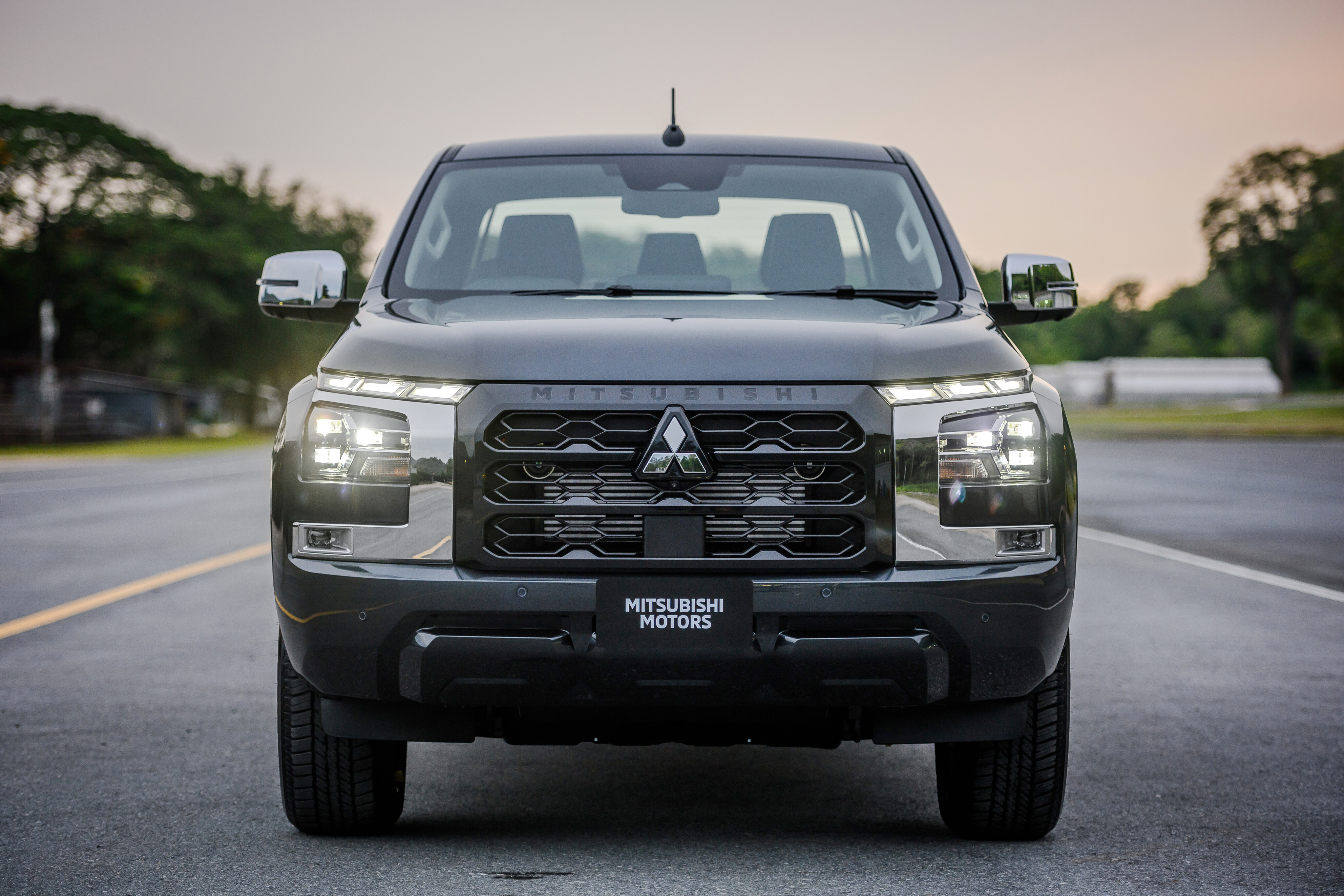
Dimensions
The dual cab Triton has grown in every direction, with a modest 15mm length increase and a significant 50mm gain in overall width.
And (finally!) the new Triton’s wheelbase length has grown beyond 3000mm, now at 3130mm. This should improve occupant space, and the new rear axle location should improve its load-lugging ability.
The tray has also grown by 35mm in length to 1555mm and measures 1545mm at its widest point. Its load height is also lower by 45mm (820mm), with a flattened grip-taped area atop the bumper to stand on when loading objects.
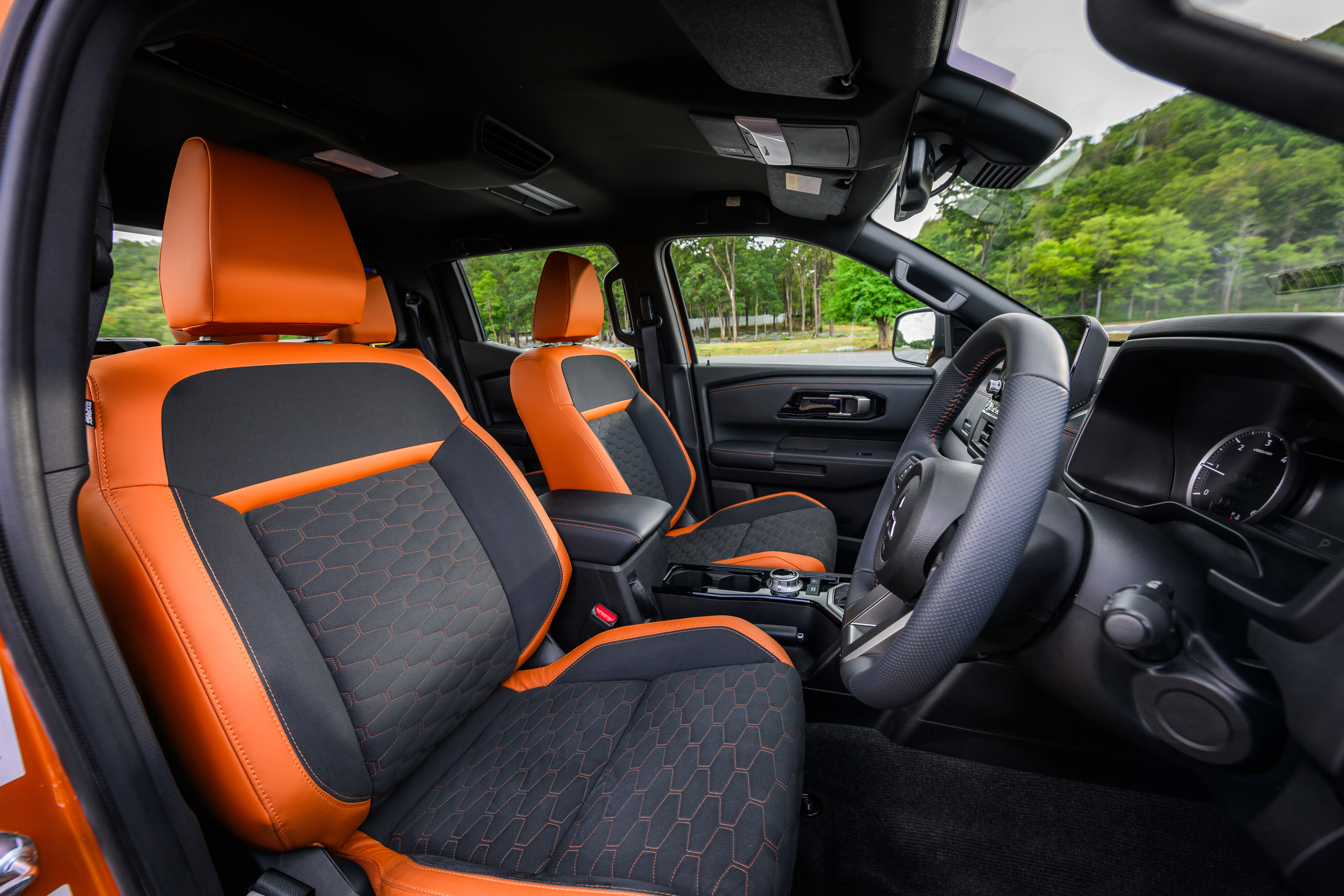
Engine and powertrains
All Tritons score a newly-developed ‘4N16’ 2.4-litre turbo-diesel four-cylinder in one of three tunes, with the most powerful (and likely for Australia initially) twin-turbo version producing 150kW at 3500rpm and 470Nm between 1500-2750rpm.
It may not challenge the Ford Ranger’s 600Nm V6 – or the 500Nm bi-turbo and HiLux – but bumping the old car's outputs by 17kW and 40Nm isn’t to be sniffed at, surpassing the D-Max and BT-50's 450Nm.
The new Triton’s braked towing capacity climbs 400 kilograms to the industry-standard 3500kg. It will be available with a six-speed torque converter automatic or six-speed manual, with the latter adding a cable linkage to improve NVH suppression and lighten the shift.
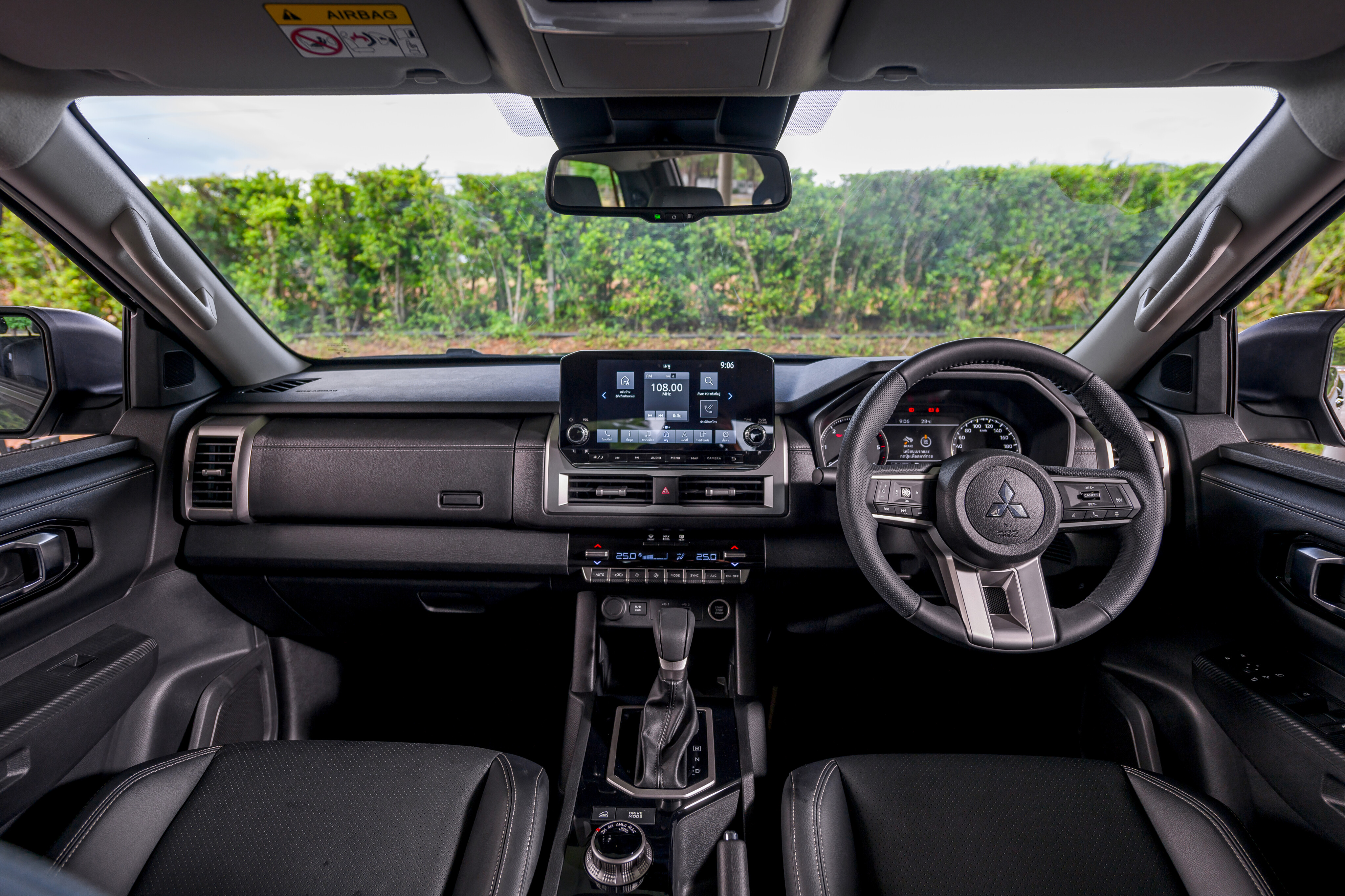
Mitsubishi’s Easy Select 4WD system remains fitted to lower grades, while its signature Super Select II system is retained for up-spec models.
The Super Select system allows drivers to keep the Triton in 4H on all surfaces without locking the centre differential for improved grip on paved surfaces.
On the loose stuff, switching to 4HLc (this can be done on the move) improves traction again with a locked centre diff – best combined with mud and sand drive modes – while 4LLc engages the low-range transfer case, and can be paired with rock mode for low-speed crawling.
There’s also what Mitsubishi calls ‘active yaw control’, which uses the brakes on individual wheels to simulate the effect of a locking front diff and minimise traction loss in low-speed slippery conditions.
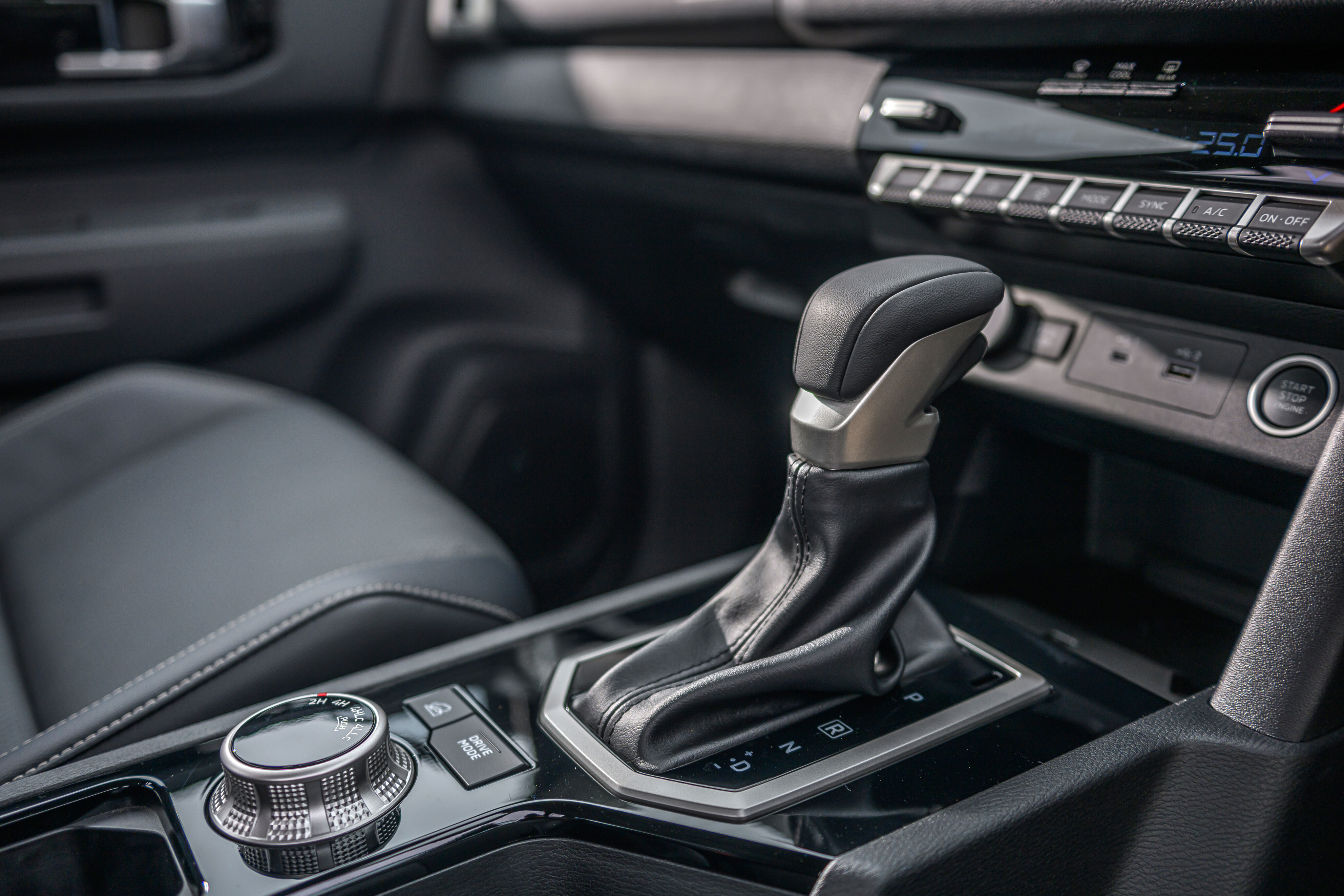
Exterior and interior design
Departing from the brand’s chrome-heavy ‘dynamic shield’ front design details for the new ‘beast mode’ interpretation, the new Triton’s bluff grille “expresses powerful performance”, said Mitsubishi.
The lighting features have been sharpened for a more modern look, with three L-shaped LED signatures sitting above the chrome bezels nestled in the LED headlights.
Down the flanks, the Triton features more significant fender flares that nod to the previous ute’s squared-off wheel arches. From the rear three-quarter, the broad shoulders remind us somewhat of the Ford F-150 ute, though the T-shaped LED tail lights are unique.
New alloy wheels – though they do bear resemblance to the current rims – finish off the new Triton’s exterior appearance.
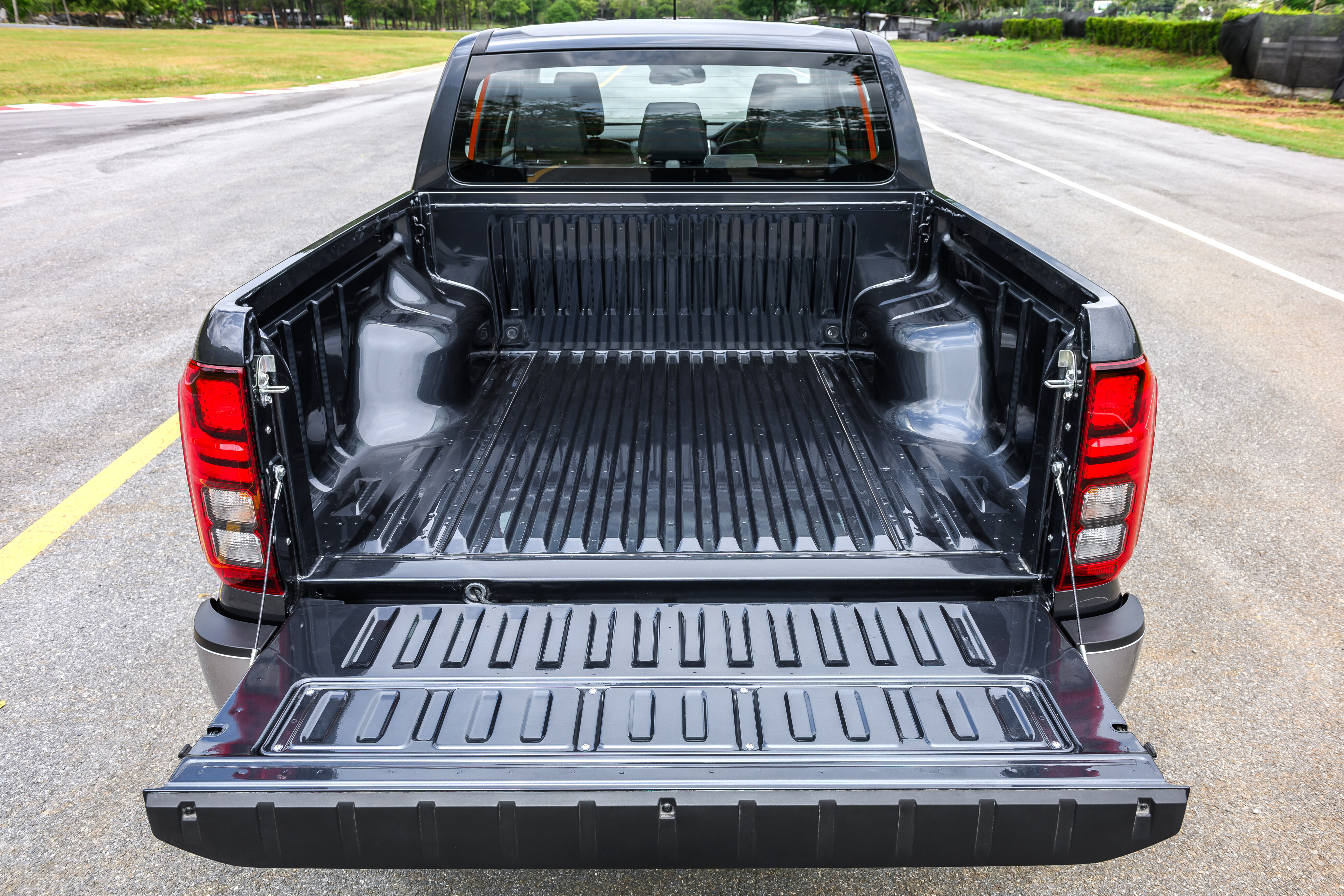
Inside, though, the Triton’s treatment is even more significant. Gone is the current ute’s dated interior, replaced with an airy, modern and high-quality cabin.
Both mid and top-spec Tritons in Thailand (pictured) will feature a larger 9-inch infotainment system similar to the Outlander midsize SUV, up from 7 inches.
Satellite navigation, traffic sign recognition, wireless Apple CarPlay (and wired Android Auto), and connected-vehicle telematics such as vehicle status, and remote locking via a smartphone application are new, too – but the last feature is unlikely for Australia, at least initially.
While rivals such as the Ford Ranger and Volkswagen Amarok have moved to fully digital dials, the new-gen Triton retains a combination of analogue dials like the Isuzu D-Max, with an integrated 7-inch multi-information display.
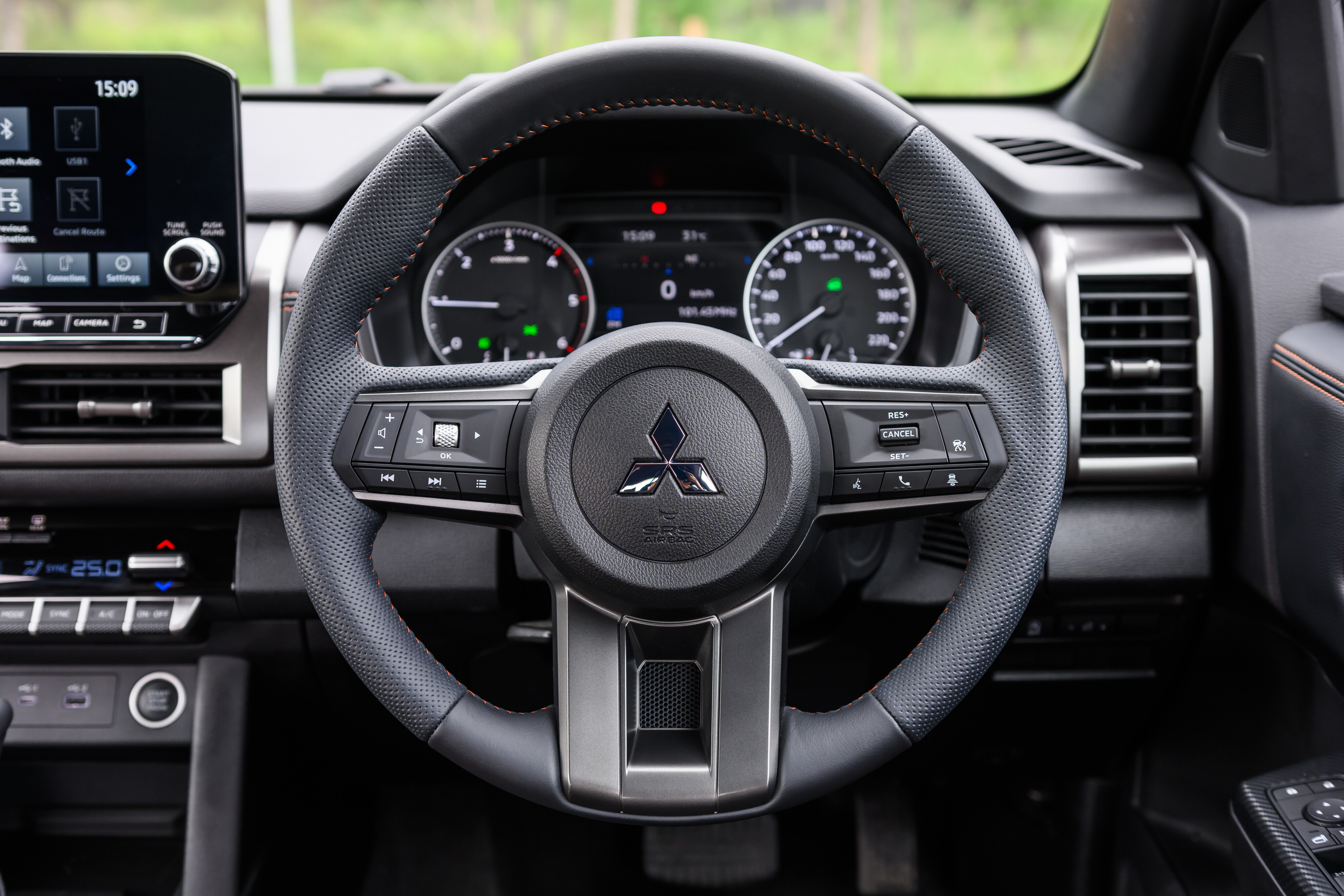
Mitsubishi has increased the size of the tray ahead of the Triton’s newly-designed gear shifter while retaining a physical handbrake (connected to rear drums) and two drinks holders behind, with larger door pockets than the old car.
Material quality is also improved, claims Mitsubishi, and visually the introduction of dimpled leather-appointed steering wheels and suede-cloth upholstery in top-spec cars gives credence to its claims.
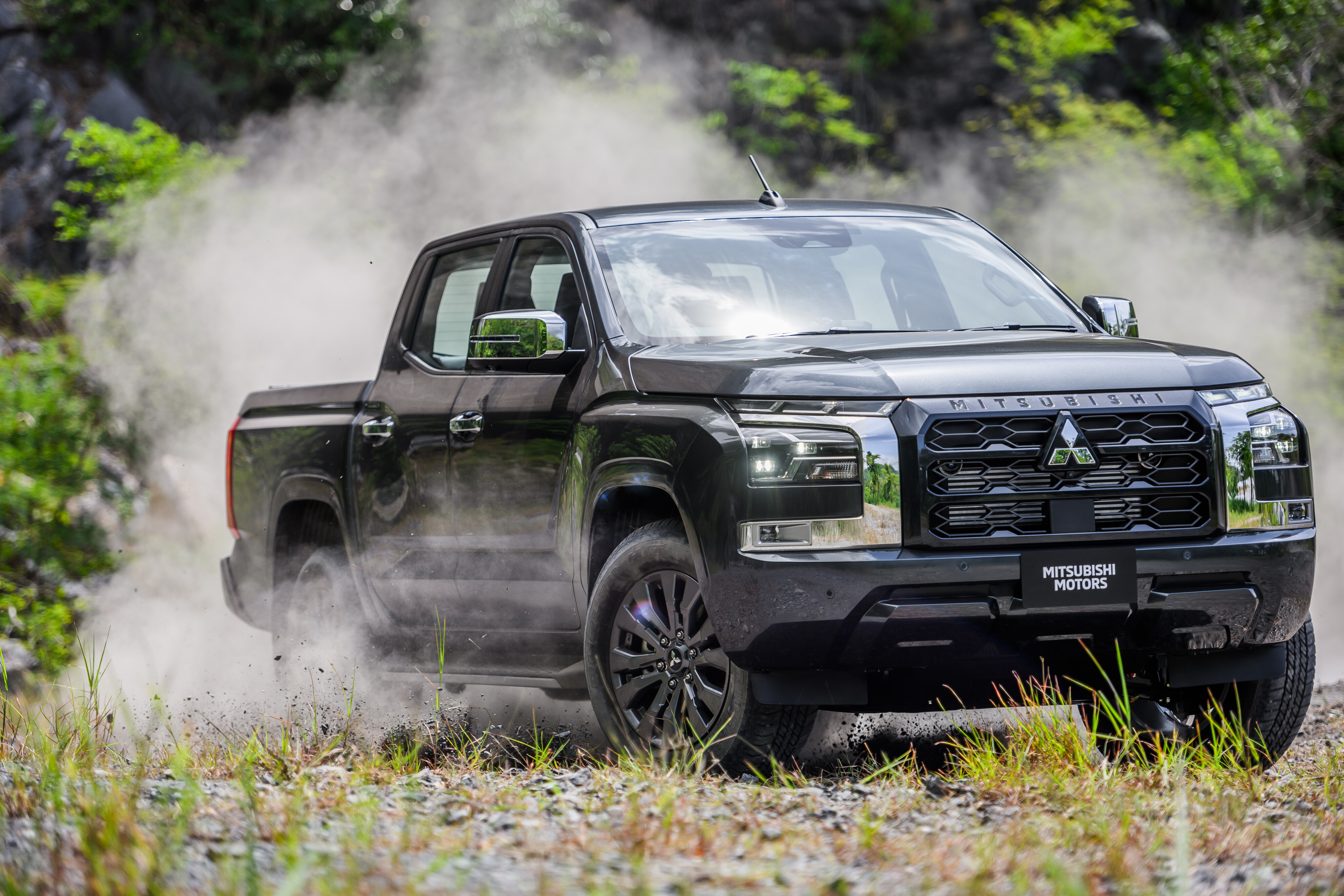
As before, a full leather interior is optional on the flagship variant.
Mitsubishi claims to have improved the front seats with additional lower back support – a common complaint of the previous car – and a 20mm higher hip point. The new Triton’s more upright A-pillar aids ingress by providing a wider door aperture.
The 50mm width expansion translates almost directly into second-row shoulder room, with 49mm more than before, which should make for happier passengers. The three wide bench also has a fold-down armrest, while the air vents remain in the roof.
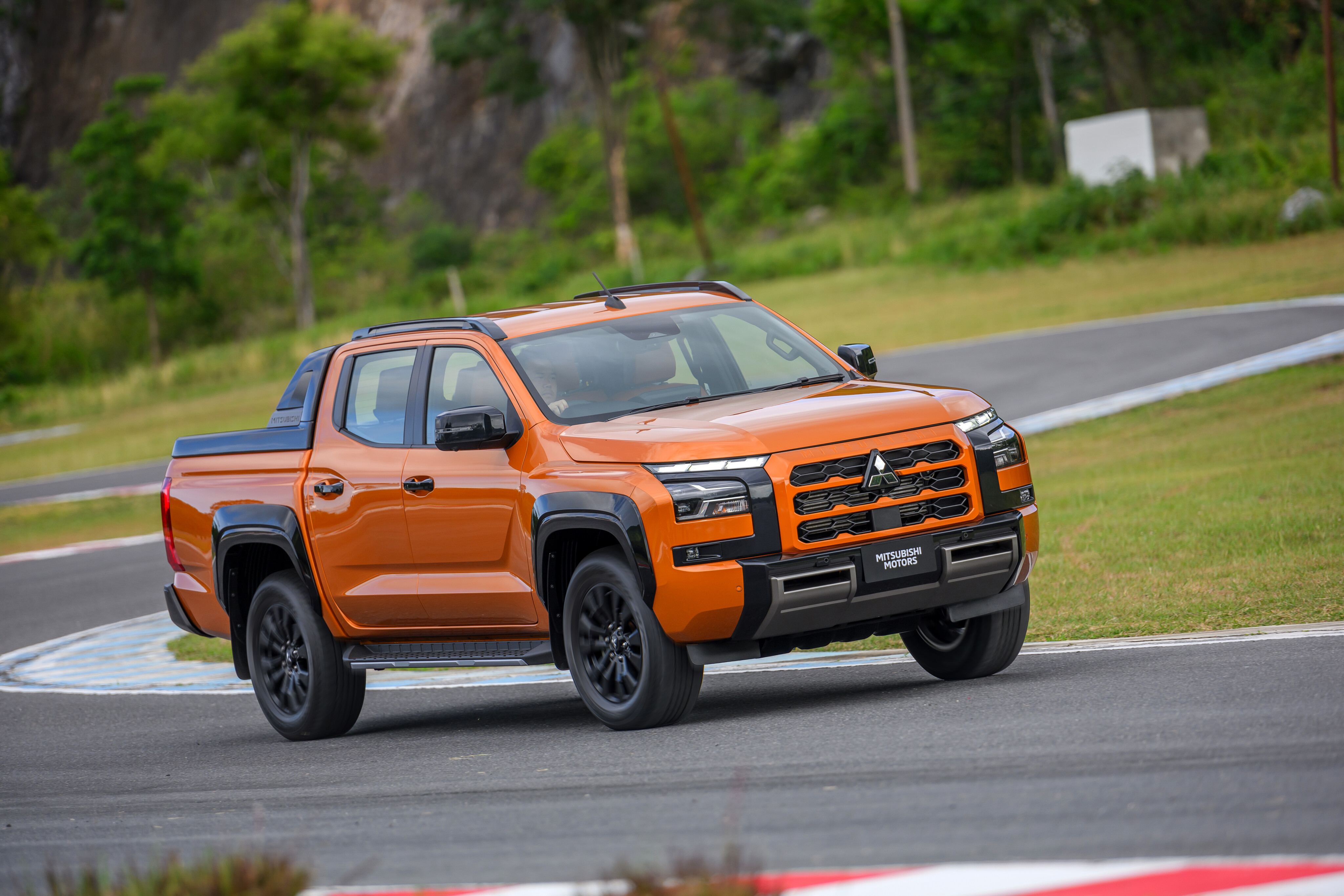
Safety and convenience
With the Triton's significant upgrade, Mitsubishi has engineered active safety systems from the start of development.
Front autonomous emergency braking (AEB) with pedestrian, cyclist and junction detection, rear AEB, rear cross-traffic alert, blind-spot monitoring, lane-departure warning, adaptive cruise control and lane-keep assist, "among others", all feature in the new model.
Mitsubishi has also included a front-centre airbag in the new Triton. The ute is yet to be assessed by independent safety testing bodies such as ANCAP.
Availability
The 2024 Mitsubishi Triton ute is expected to arrive in Australia in early 2024, with local details – including pricing and features – to be announced closer to its launch.

COMMENTS